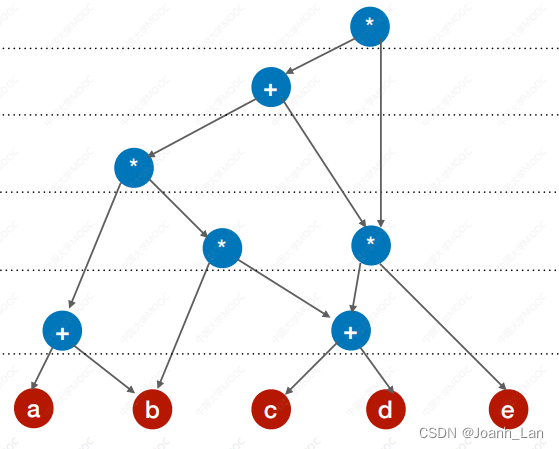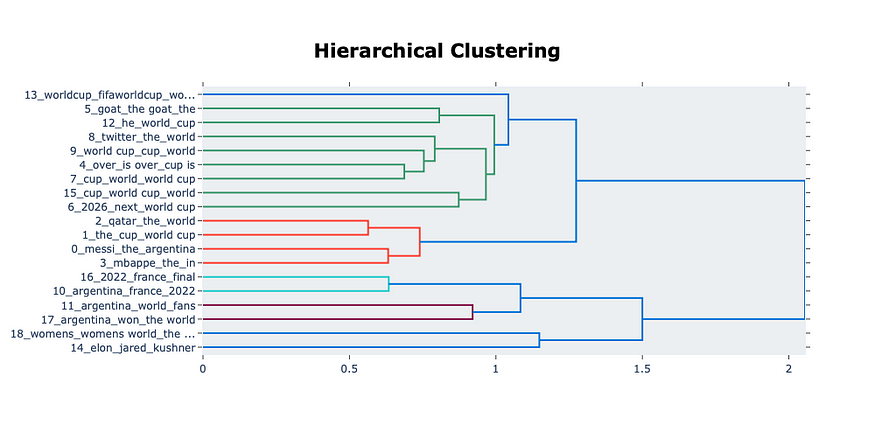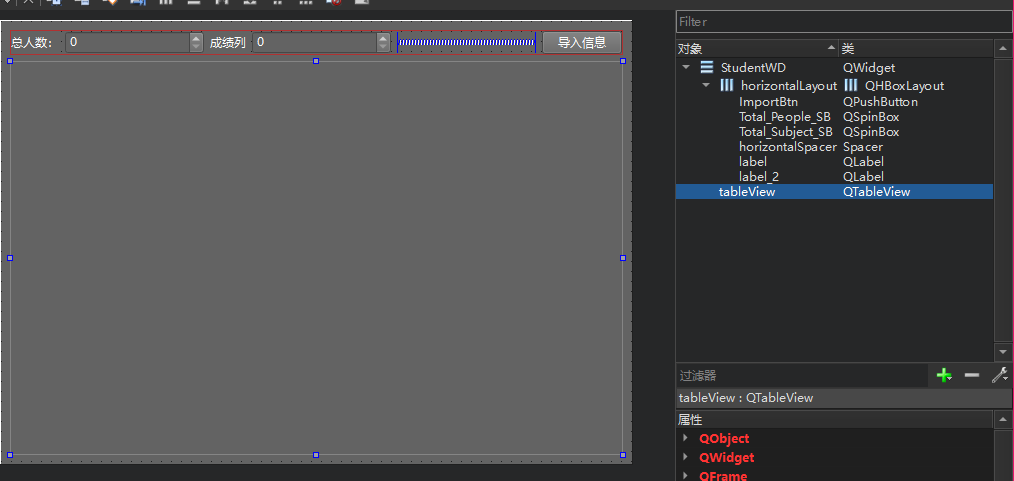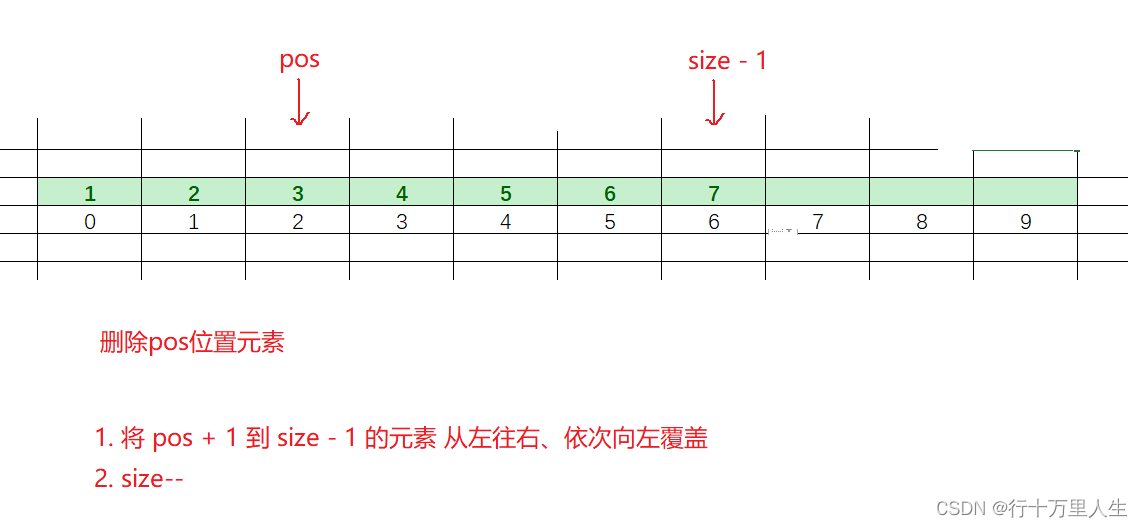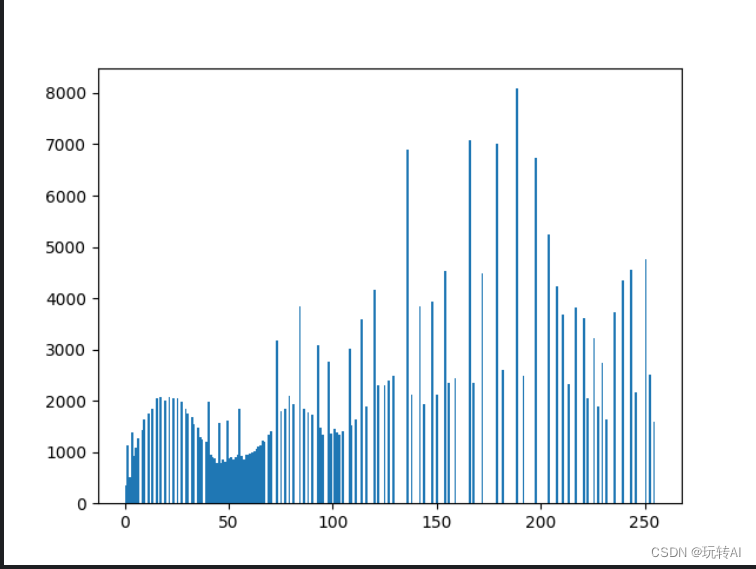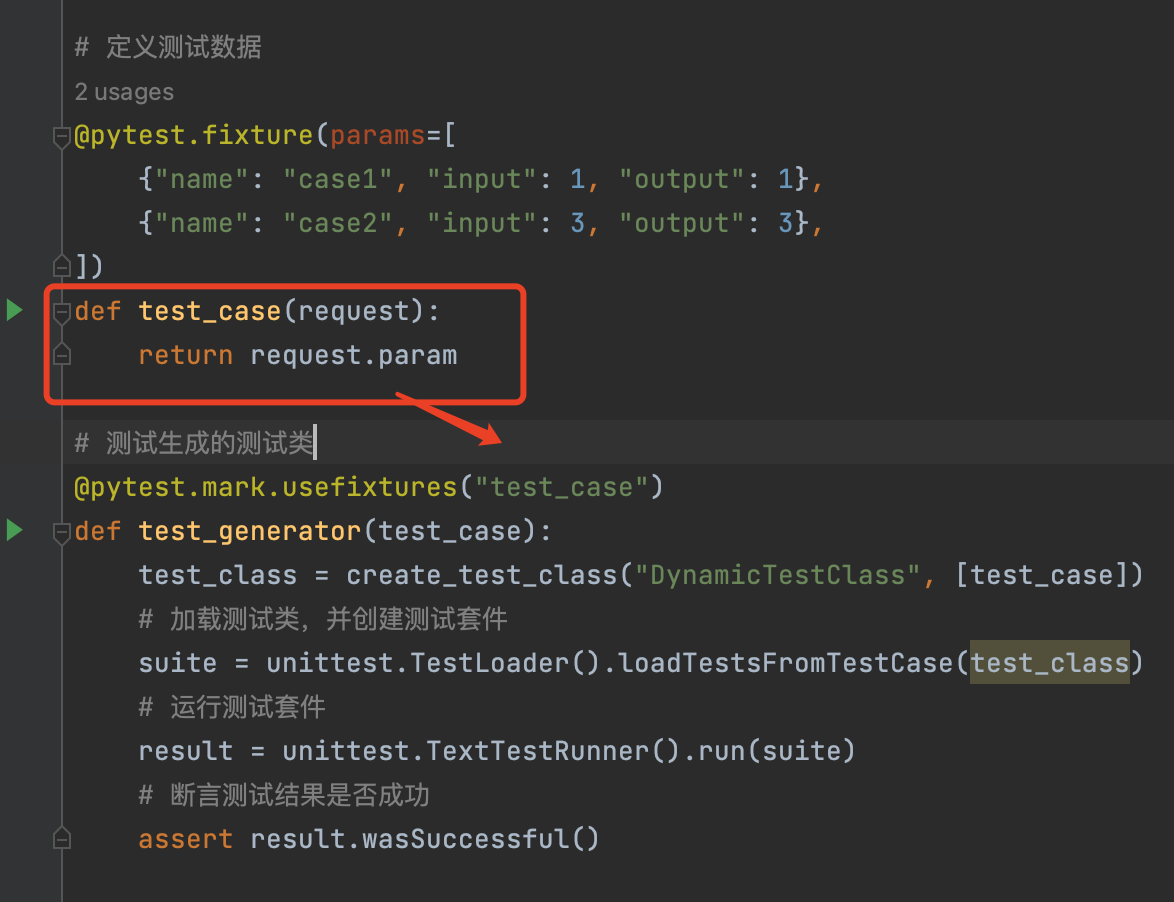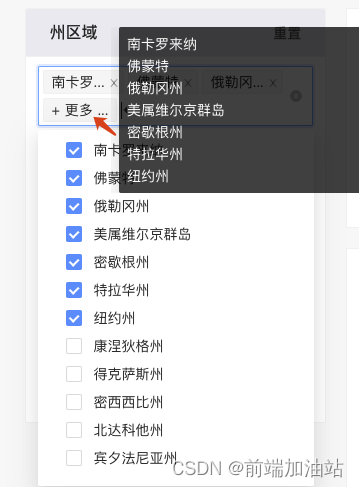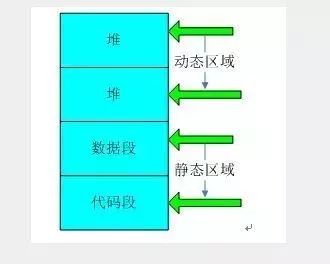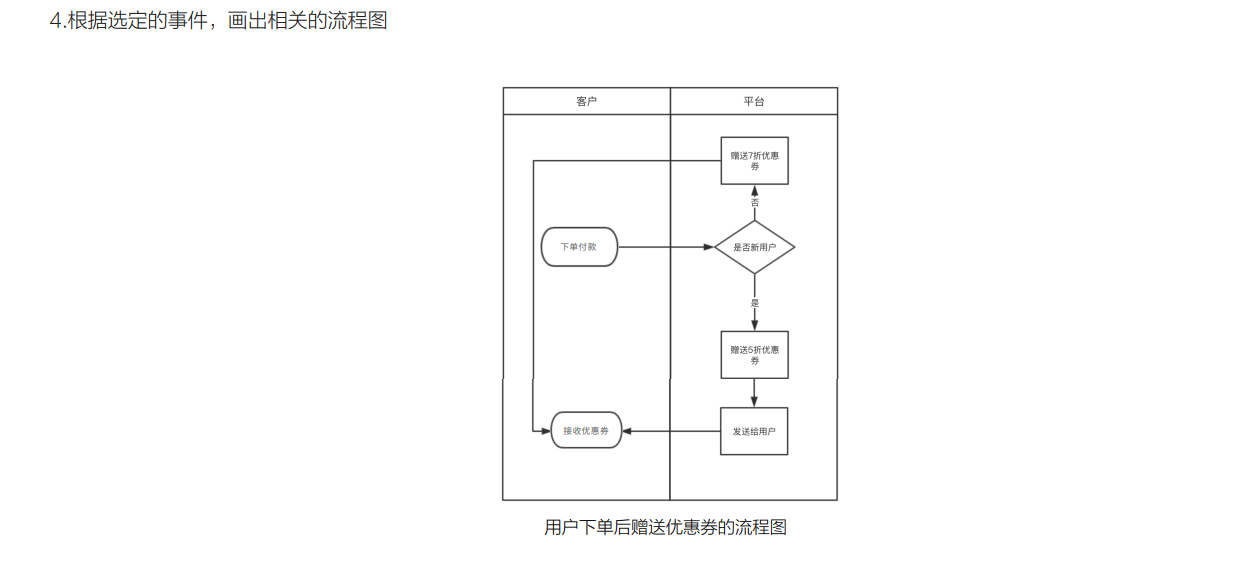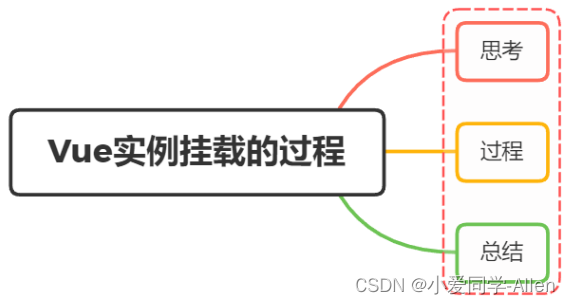
一、思考
我们都听过知其然知其所以然这句话
那么不知道大家是否思考过new Vue()这个过程中究竟做了些什么?
过程中是如何完成数据的绑定,又是如何将数据渲染到视图的等等
一、分析
首先找到vue的构造函数
源码位置:src\core\instance\index.js
function Vue (options) {if (process.env.NODE_ENV !== 'production' &&!(this instanceof Vue)) {warn('Vue is a constructor and should be called with the `new` keyword')}this._init(options)
}
options是用户传递过来的配置项,如data、methods等常用的方法
vue构建函数调用_init方法,但我们发现本文件中并没有此方法,但仔细可以看到文件下方定定义了很多初始化方法
initMixin(Vue); // 定义 _init
stateMixin(Vue); // 定义 $set $get $delete $watch 等
eventsMixin(Vue); // 定义事件 $on $once $off $emit
lifecycleMixin(Vue);// 定义 _update $forceUpdate $destroy
renderMixin(Vue); // 定义 _render 返回虚拟dom首先可以看initMixin方法,发现该方法在Vue原型上定义了_init方法
源码位置:src\core\instance\init.js
Vue.prototype._init = function (options?: Object) {const vm: Component = this// a uidvm._uid = uid++let startTag, endTag/* istanbul ignore if */if (process.env.NODE_ENV !== 'production' && config.performance && mark) {startTag = `vue-perf-start:${vm._uid}`endTag = `vue-perf-end:${vm._uid}`mark(startTag)}// a flag to avoid this being observedvm._isVue = true// merge options// 合并属性,判断初始化的是否是组件,这里合并主要是 mixins 或 extends 的方法if (options && options._isComponent) {// optimize internal component instantiation// since dynamic options merging is pretty slow, and none of the// internal component options needs special treatment.initInternalComponent(vm, options)} else { // 合并vue属性vm.$options = mergeOptions(resolveConstructorOptions(vm.constructor),options || {},vm)}/* istanbul ignore else */if (process.env.NODE_ENV !== 'production') {// 初始化proxy拦截器initProxy(vm)} else {vm._renderProxy = vm}// expose real selfvm._self = vm// 初始化组件生命周期标志位initLifecycle(vm)// 初始化组件事件侦听initEvents(vm)// 初始化渲染方法initRender(vm)callHook(vm, 'beforeCreate')// 初始化依赖注入内容,在初始化data、props之前initInjections(vm) // resolve injections before data/props// 初始化props/data/method/watch/methodsinitState(vm)initProvide(vm) // resolve provide after data/propscallHook(vm, 'created')/* istanbul ignore if */if (process.env.NODE_ENV !== 'production' && config.performance && mark) {vm._name = formatComponentName(vm, false)mark(endTag)measure(`vue ${vm._name} init`, startTag, endTag)}// 挂载元素if (vm.$options.el) {vm.$mount(vm.$options.el)}}
仔细阅读上面的代码,我们得到以下结论:
- 在调用beforeCreate之前,数据初始化并未完成,像data、props这些属性无法访问到
- 到了created的时候,数据已经初始化完成,能够访问data、props这些属性,但这时候并未完成dom的挂载,因此无法访问到dom元素
- 挂载方法是调用vm.$mount方法
initState方法是完成props/data/method/watch/methods的初始化
源码位置:src\core\instance\state.js
export function initState (vm: Component) {// 初始化组件的watcher列表vm._watchers = []const opts = vm.$options// 初始化propsif (opts.props) initProps(vm, opts.props)// 初始化methods方法if (opts.methods) initMethods(vm, opts.methods)if (opts.data) {// 初始化data initData(vm)} else {observe(vm._data = {}, true /* asRootData */)}if (opts.computed) initComputed(vm, opts.computed)if (opts.watch && opts.watch !== nativeWatch) {initWatch(vm, opts.watch)}
}
我们和这里主要看初始化data的方法为initData,它与initState在同一文件上
function initData (vm: Component) {let data = vm.$options.data// 获取到组件上的datadata = vm._data = typeof data === 'function'? getData(data, vm): data || {}if (!isPlainObject(data)) {data = {}process.env.NODE_ENV !== 'production' && warn('data functions should return an object:\n' +'https://vuejs.org/v2/guide/components.html#data-Must-Be-a-Function',vm)}// proxy data on instanceconst keys = Object.keys(data)const props = vm.$options.propsconst methods = vm.$options.methodslet i = keys.lengthwhile (i--) {const key = keys[i]if (process.env.NODE_ENV !== 'production') {// 属性名不能与方法名重复if (methods && hasOwn(methods, key)) {warn(`Method "${key}" has already been defined as a data property.`,vm)}}// 属性名不能与state名称重复if (props && hasOwn(props, key)) {process.env.NODE_ENV !== 'production' && warn(`The data property "${key}" is already declared as a prop. ` +`Use prop default value instead.`,vm)} else if (!isReserved(key)) { // 验证key值的合法性// 将_data中的数据挂载到组件vm上,这样就可以通过this.xxx访问到组件上的数据proxy(vm, `_data`, key)}}// observe data// 响应式监听data是数据的变化observe(data, true /* asRootData */)
}
仔细阅读上面的代码,我们可以得到以下结论:
- 初始化顺序:props、methods、data
- data定义的时候可选择函数形式或者对象形式(组件只能为函数形式)
关于数据响应式在这就不展开详细说明
上文提到挂载方法是调用vm.$mount方法
源码位置:
Vue.prototype.$mount = function (el?: string | Element,hydrating?: boolean
): Component {// 获取或查询元素el = el && query(el)/* istanbul ignore if */// vue 不允许直接挂载到body或页面文档上if (el === document.body || el === document.documentElement) {process.env.NODE_ENV !== 'production' && warn(`Do not mount Vue to <html> or <body> - mount to normal elements instead.`)return this}const options = this.$options// resolve template/el and convert to render functionif (!options.render) {let template = options.template// 存在template模板,解析vue模板文件if (template) {if (typeof template === 'string') {if (template.charAt(0) === '#') {template = idToTemplate(template)/* istanbul ignore if */if (process.env.NODE_ENV !== 'production' && !template) {warn(`Template element not found or is empty: ${options.template}`,this)}}} else if (template.nodeType) {template = template.innerHTML} else {if (process.env.NODE_ENV !== 'production') {warn('invalid template option:' + template, this)}return this}} else if (el) {// 通过选择器获取元素内容template = getOuterHTML(el)}if (template) {/* istanbul ignore if */if (process.env.NODE_ENV !== 'production' && config.performance && mark) {mark('compile')}/*** 1.将temmplate解析ast tree* 2.将ast tree转换成render语法字符串* 3.生成render方法*/const { render, staticRenderFns } = compileToFunctions(template, {outputSourceRange: process.env.NODE_ENV !== 'production',shouldDecodeNewlines,shouldDecodeNewlinesForHref,delimiters: options.delimiters,comments: options.comments}, this)options.render = renderoptions.staticRenderFns = staticRenderFns/* istanbul ignore if */if (process.env.NODE_ENV !== 'production' && config.performance && mark) {mark('compile end')measure(`vue ${this._name} compile`, 'compile', 'compile end')}}}return mount.call(this, el, hydrating)
}
阅读上面代码,我们能得到以下结论:
- 不要将根元素放到body或者html上
- 可以在对象中定义template/render或者直接使用template、el表示元素选择器
- 最终都会解析成render函数,调用compileToFunctions,会将template解析成render函数对template的解析步骤大致分为以下几步:
- 将html文档片段解析成ast描述符
- 将ast描述符解析成字符串
- 生成render函数
生成render函数,挂载到vm上后,会再次调用mount方法
源码位置:src\platforms\web\runtime\index.js
// public mount method
Vue.prototype.$mount = function (el?: string | Element,hydrating?: boolean
): Component {el = el && inBrowser ? query(el) : undefined// 渲染组件return mountComponent(this, el, hydrating)
}
调用mountComponent渲染组件
export function mountComponent (vm: Component,el: ?Element,hydrating?: boolean
): Component {vm.$el = el// 如果没有获取解析的render函数,则会抛出警告// render是解析模板文件生成的if (!vm.$options.render) {vm.$options.render = createEmptyVNodeif (process.env.NODE_ENV !== 'production') {/* istanbul ignore if */if ((vm.$options.template && vm.$options.template.charAt(0) !== '#') ||vm.$options.el || el) {warn('You are using the runtime-only build of Vue where the template ' +'compiler is not available. Either pre-compile the templates into ' +'render functions, or use the compiler-included build.',vm)} else {// 没有获取到vue的模板文件warn('Failed to mount component: template or render function not defined.',vm)}}}// 执行beforeMount钩子callHook(vm, 'beforeMount')let updateComponent/* istanbul ignore if */if (process.env.NODE_ENV !== 'production' && config.performance && mark) {updateComponent = () => {const name = vm._nameconst id = vm._uidconst startTag = `vue-perf-start:${id}`const endTag = `vue-perf-end:${id}`mark(startTag)const vnode = vm._render()mark(endTag)measure(`vue ${name} render`, startTag, endTag)mark(startTag)vm._update(vnode, hydrating)mark(endTag)measure(`vue ${name} patch`, startTag, endTag)}} else {// 定义更新函数updateComponent = () => {// 实际调⽤是在lifeCycleMixin中定义的_update和renderMixin中定义的_rendervm._update(vm._render(), hydrating)}}// we set this to vm._watcher inside the watcher's constructor// since the watcher's initial patch may call $forceUpdate (e.g. inside child// component's mounted hook), which relies on vm._watcher being already defined// 监听当前组件状态,当有数据变化时,更新组件new Watcher(vm, updateComponent, noop, {before () {if (vm._isMounted && !vm._isDestroyed) {// 数据更新引发的组件更新callHook(vm, 'beforeUpdate')}}}, true /* isRenderWatcher */)hydrating = false// manually mounted instance, call mounted on self// mounted is called for render-created child components in its inserted hookif (vm.$vnode == null) {vm._isMounted = truecallHook(vm, 'mounted')}return vm
}
阅读上面代码,我们得到以下结论:
- 会触发beforeCreate钩子
- 定义updateComponent渲染页面视图的方法
- 监听组件数据,一旦发生变化,触发beforeUpdate生命钩子
updateComponent方法主要执行在vue初始化时声明的render,update方法
render的作用主要是生成vnode
源码位置:src\core\instance\render.js
// 定义vue 原型上的render方法
Vue.prototype._render = function (): VNode {const vm: Component = this// render函数来自于组件的optionconst { render, _parentVnode } = vm.$optionsif (_parentVnode) {vm.$scopedSlots = normalizeScopedSlots(_parentVnode.data.scopedSlots,vm.$slots,vm.$scopedSlots)}// set parent vnode. this allows render functions to have access// to the data on the placeholder node.vm.$vnode = _parentVnode// render selflet vnodetry {// There's no need to maintain a stack because all render fns are called// separately from one another. Nested component's render fns are called// when parent component is patched.currentRenderingInstance = vm// 调用render方法,自己的独特的render方法, 传入createElement参数,生成vNodevnode = render.call(vm._renderProxy, vm.$createElement)} catch (e) {handleError(e, vm, `render`)// return error render result,// or previous vnode to prevent render error causing blank component/* istanbul ignore else */if (process.env.NODE_ENV !== 'production' && vm.$options.renderError) {try {vnode = vm.$options.renderError.call(vm._renderProxy, vm.$createElement, e)} catch (e) {handleError(e, vm, `renderError`)vnode = vm._vnode}} else {vnode = vm._vnode}} finally {currentRenderingInstance = null}// if the returned array contains only a single node, allow itif (Array.isArray(vnode) && vnode.length === 1) {vnode = vnode[0]}// return empty vnode in case the render function errored outif (!(vnode instanceof VNode)) {if (process.env.NODE_ENV !== 'production' && Array.isArray(vnode)) {warn('Multiple root nodes returned from render function. Render function ' +'should return a single root node.',vm)}vnode = createEmptyVNode()}// set parentvnode.parent = _parentVnodereturn vnode
}_update主要功能是调用patch,将vnode转换为真实DOM,并且更新到页面中
源码位置:src\core\instance\lifecycle.js
Vue.prototype._update = function (vnode: VNode, hydrating?: boolean) {const vm: Component = thisconst prevEl = vm.$elconst prevVnode = vm._vnode// 设置当前激活的作用域const restoreActiveInstance = setActiveInstance(vm)vm._vnode = vnode// Vue.prototype.__patch__ is injected in entry points// based on the rendering backend used.if (!prevVnode) {// initial render// 执行具体的挂载逻辑vm.$el = vm.__patch__(vm.$el, vnode, hydrating, false /* removeOnly */)} else {// updatesvm.$el = vm.__patch__(prevVnode, vnode)}restoreActiveInstance()// update __vue__ referenceif (prevEl) {prevEl.__vue__ = null}if (vm.$el) {vm.$el.__vue__ = vm}// if parent is an HOC, update its $el as wellif (vm.$vnode && vm.$parent && vm.$vnode === vm.$parent._vnode) {vm.$parent.$el = vm.$el}// updated hook is called by the scheduler to ensure that children are// updated in a parent's updated hook.}
三、结论
new Vue的时候调用会调用_init方法
- 定义 s e t 、 set、 set、get 、 d e l e t e 、 delete、 delete、watch 等方法
- 定义 o n 、 on、 on、off、 e m i t 、 emit、 emit、off等事件
- 定义 _update、 f o r c e U p d a t e 、 forceUpdate、 forceUpdate、destroy生命周期
调用$mount进行页面的挂载
挂载的时候主要是通过mountComponent方法
定义updateComponent更新函数
执行render生成虚拟DOM
_update将虚拟DOM生成真实DOM结构,并且渲染到页面中


